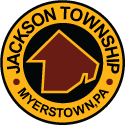
uring the French and Indian war, from 1755 to 1760, the inhabitants of this township, in common with many others, were repeatedly alarmed by the Indians. Several murders were committed by them with the borders of this township. On one occasion many of the inhabitants of this and adjacent townships, met at the house of Benjamin Spycker’s near the present site of Stouchstown. There a company consisting of rising of three hundred men, went in pursuit of the Indians, most of them well armed, though about twenty of them, had nothing but axes and pitchforks – all unanimously agreed to die together, and engage the enemy, wherever they should meet them. This happened in October 1755.
In this, as well as other townships, there were several block houses, or forts, to which, in cases of emergency, the inhabitants would flee. There was one – we were informed by Mr. Breitenbach, on the farm now owned by him – a short distance east of Myerstown.

Philip Breitenbach, the father of Mr. Breitenbach mentioned above, came from Germany – in 1754 he purchased the tract of land on which a fort was afterwards erected, from Martin Noacker. Philip Breitenbach was wont, on many occasions of alarm, to take his drum and beat on an eminence near his house, to collect the neighbors from work, into the fort. On one occasion, the Indians pursued them close to the house, when one of the inmates took up a gun, and shot the Indian dead on the spot.
Jackson township is bounded on the north-east by Berks county – on the south by Heidelberg township; and on the west by South and North Lebanon, and Bethel townships; and contains nearly fifteen thousand acres of first rate land – limestone soil, and the surface is generally very level. The improvements are very firm. Buildings are – many of stone – large and commodious.
The township is crossed by both the Reading and Harrisburg turnpike, and Union Canal. Tulpehocken creek, and the Swatara, are the principal streams, affording water power for mills, &c. In 1840, this township contained three grist mills, one saw mill, two tanneries, two distilleries, four stores, and two lumber yards. Population in 1830, 2,120; in 1840, 2,508. Average tax valuation for 1840, $1,031,326; county tax $2,546 99.

